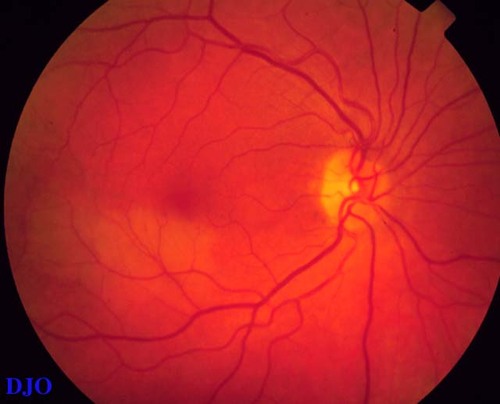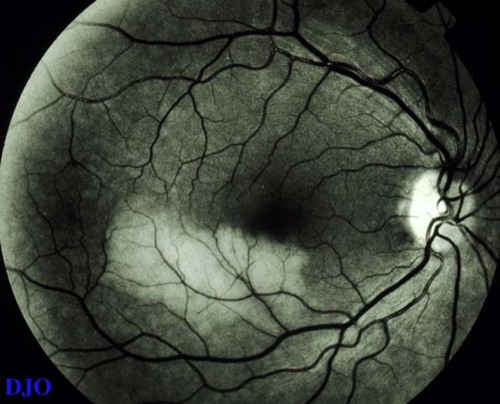|
|
 |
 |
 |
 |
|
|
Retina/Uveitis Quiz 17
|
Printer Friendly
|



Scott Burk, MD/PhD | Massachusetts Eye and Ear Infirmary, Harvard Medical School Mary Coday, MD | Massachusetts Eye and Ear Infirmary, Harvard Medical School February 19, 1997
|
|
[Back to Questions] [Back to Retina/Uveitis]
|

Figure 1
Figures 1-2. Fundus photographs of a 69 year old man who noted a sudden dense paracentral scotoma.
|

Figure 2
|
| Questions and Answers | 1. What is your diagnosis?
Answer: Branch retinal artery occlusion (BRAO)
2. What is the most likely etiology for this condition?
Answer: Embolic occlusion is the most common cause of BRAO.
3. What are the most common sources of emboli to the retina?
Answer: Calcific, vegetative and thrombotic emboli may originate in the heart, while cholesterol, fibrinoplatelet, and calcific emboli tend to originate in the carotids, most commonly at the carotid bifurcation.
4. Why is the affected area characteristically whitened?
Answer: The retinal ischemia results in diminished ATP production, and as a result cells cannot maintain their transmembrane gradients of fluid and electrolytes. Sodium, water, and calcium rush INTO the cells resulting in cellular swelling and death. The swollen cells scatter light resulting in a white appearance.
5. What other clinical investigations should be considered?
Answer: Given that the majority of BRAOs are due to embolic disease on should investigate to find the source of emboli. This would generally include carotid Doppler ultrasound, and an echocardiogram and a 24 hour Holter monitor study. Evaluation by the patients internist is generally helpful.
6. How would you treat this patient?
Answer: While there is no proven treatment, ocular massage, and lowering intraocular pressure may dislodge an embolus. In general treatment must be aimed at identifying and alleviating the underlying problem. Patients should be instructed about modifying atherosclerotic risk factors, antiplatelet therapy may be instituted, and carotid endarterectomy might be considered in patients with significant carotid disease.
| | | [Back to Questions] |
|
 |
 |
 |

|
|
 Welcome, please sign in
Welcome, please sign in  Welcome, please sign in
Welcome, please sign in